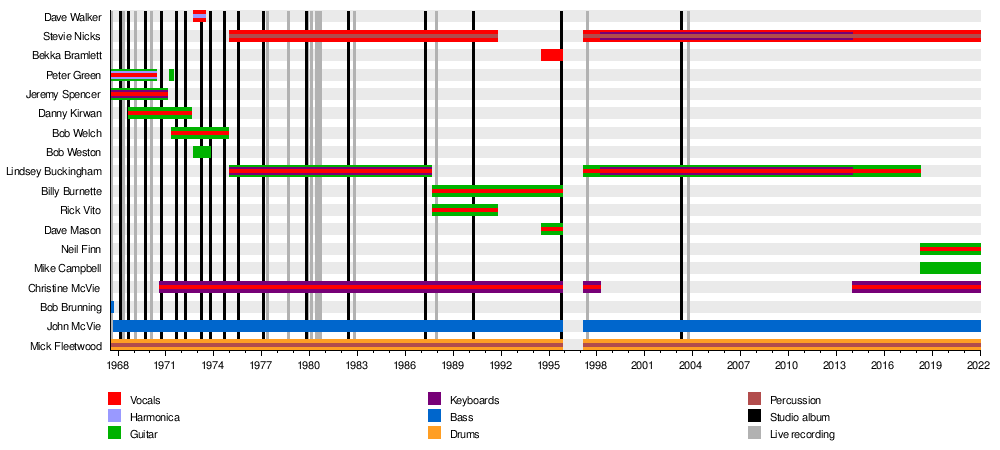
So in October 1973, Davis took the audacious step of assembling a group of musicians to become Fleetwood Mac. In Welch’s words, “I guess he just couldn’t wait.” The band’s not breaking up, but we don’t know what we want to do, and everybody just needs a long rest, so just wait until you hear from us.”ĭavis’ side of the story has not been extensively chronicled, but it’s possible that he was concerned about losing Fleetwood Mac’s hard-won commercial momentum in the U.S., especially with Mystery to Me about to hit the record stores. Welch said, “ we don’t want to work until we say we want to work, and we don’t want to make a record until we say we want to.
Who played studio bass for fleetwood mac mac#
When the remaining members of Fleetwood Mac returned home to the UK in the fall of 1973, they told Davis that they needed a break. Despite Davis allegedly threatening “if you blow this tour, you’ll never get another chance,” Fleetwood took the initiative to fire Weston and cancel the rest of the tour. The band attempted to “soldier on”, but the conflicts became unbearable. However, John and Christine McVie’s marriage was falling apart, and then during the tour Weston had an affair with Fleetwood’s wife, Jenny. became even more critical to Fleetwood Mac’s fortunes.Īfter Kirwan’s departure, guitarist Bob Weston and vocalist Dave Walker were added for the Penguin album Walker soon departed, but Weston stayed on for Mystery to Me and the U.S. At the same time, Fleetwood said in his autobiography, “our fan base had moved across the Atlantic…our die-hard blues fans felt that we’d abandoned them”. Peter Green, Danny Kirwan, Jeremy Spencer on guitars John McVie on bass Mick Fleetwood on drums:īut the chaos returned in late 1972 during the tour to support the Bare Trees album, when Kirwan was fired by the rest of the band for his unstable behavior. That’s why the “fake Fleetwood Mac” debacle of 1974 still stands out as one of the strangest episodes in pop music history, and, in retrospect, as a pivotal point in the 50-year history of the real Fleetwood Mac.Īrguably, the “realest” of the real Fleetwood Macs (circa 1969). It’s a messy world out there.īut even in that confusing environment, it’s highly unusual for a band to go on tour without the involvement of any past or current members.

Then there are the tribute bands, and bands that are now one or two founding members backed by musicians who could be their grandkids, and multiple live versions of the same band, with each one led by a member of the original group.

But the musicians who played on that beloved record might not even be the same musicians that played those songs live. Purists might insist that the “real” band is the very first lineup, or whichever subsequent lineup produced their favourite song or album. The question of what constitutes a “real” band is a complicated one. It was one of the strangest situations in pop music history–not a single member of the original band, or even one of their replacements, was involved in a group called Fleetwood Mac that toured the U.S….until the ruse was sniffed out. There are some who’d say the “real” Fleetwood Mac ended when Peter Green left the band for good in 1972, but what happened two years later was something else entirely.


 0 kommentar(er)
0 kommentar(er)
